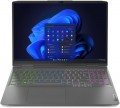Brightness
The maximum brightness that a laptop screen can provide.
The brighter the ambient light, the brighter the laptop screen should be, otherwise the image on it may be difficult to read. And vice versa: in dim ambient light, high brightness is unnecessary — it greatly burdens the eyes (however, in this case, modern laptops provide brightness control). Thus, the higher this indicator, the more versatile the screen is, the wider the range of conditions in which it can be effectively used. The downside of these benefits is an increase in price and energy consumption.
As for specific values, many modern laptops have a brightness of
250 – 300 nt and even
lower. This is quite enough for working under artificial lighting of medium intensity, but in bright natural light, visibility may already be a problem. For use in sunny weather (especially outdoors), it is desirable to have a brightness margin of at least
300 – 350 nt. And in the most advanced models, this parameter can be
350 – 400 nt and even
more.
Contrast
The contrast of the screen installed in the laptop.
Contrast is the largest difference in brightness between the lightest white and darkest black that can be achieved on a single screen. It is written as a fraction, for example, 560:1; while the larger the first number, the higher the contrast, the more advanced the screen is and the better the image quality can be achieved on it. This is especially noticeable with large differences in brightness within a single frame: with low contrast, individual details located in the darkest or brightest parts of the picture may be lost, increasing the contrast allows you to eliminate this phenomenon to a certain extent. The flip side of these benefits is an increase in cost.
Separately, we emphasize that in this case only static contrast is indicated — the difference provided within one frame in normal operation, at constant brightness and without the use of special technologies. For advertising purposes, some manufacturers may also provide data on the so-called dynamic contrast — it can be measured in very impressive numbers (seven-digit or more). However, you should focus primarily on static contrast — this is the basic characteristic of any display.
As for specific values, even in the most advanced screens, this indicator does not exceed 2000: 1. But in general, modern laptops have a rather low contrast ratio — it is assumed that for tasks that require more advanced image characteristics, it is more...reasonable to use an external screen (monitor or TV).
Passmark CPU Mark
The result shown by the laptop processor in the Passmark CPU Mark test.
Passmark CPU Mark is a comprehensive test that is more detailed and reliable than the popular 3DMark06 (see above). It checks not only the gaming capabilities of the CPU, but also its performance in other modes, based on which it displays the overall score; this score can be used to fairly reliably evaluate the processor as a whole (the more points, the higher the performance).
RAM
The amount of random access memory (RAM or RAM) actually installed in the laptop.
The amount of RAM is one of the most important indicators characterizing the overall flow Rate of the system. The more RAM installed in a laptop, the better it will cope with “heavy” resource-intensive programs, and the more tasks can be performed on it simultaneously without “brakes” and failures.
Today
, 4 GB of RAM is considered the minimum required. A capacity of
8 GB is usually enough for comfortable household use and simple games,
16 GB and
32 GB are enough for running resource-intensive applications and confidently launching modern games. And in advanced gaming and professional laptops there are also larger amounts of RAM -
64 GB or even more.
Note that many laptop models allow you to increase the available amount of RAM; For more details, see “Maximum installed volume”.
Graphics card model
GeForce graphics cards from NVIDIA:
RTX represented by
RTX 2060,
RTX 2060 Max-Q,
RTX 2070,
RTX 2070 Max-Q,
RTX 2070 Super, RTX
2070 Super Max-Q,
RTX 2080,
RTX 2080 Max-Q,
RTX 2080 Super,
RTX 2080 Super Max-Q,
RTX 3050,
RTX 3050 Ti,
RTX 3060,
RTX 3060 Max-Q,
RTX 3070,
RTX 3070 Max-Q, RTX 3070 Ti, RTX 3080,
RTX 3080 Ti,
RTX 4050,
RTX 4060,
R TX 4070,
RTX 4080,
RTX 4090,
RTX 5070,
RTX 5070 Ti,
RTX 5080,
RTX 5090;
MX1xx represented by MX110, MX130 and MX150,
MX2xx(MX230 and MX250),
MX3xx(MX330 and MX350),
MX450, GTX which represent GTX 1050,
GTX 1060,
GTX 1060 Max-Q,
GTX 1070,
GTX 1070 Max-Q,
GTX 1080,
GTX 1080 Max-Q,
GTX 1650,
GTX 1650 Max-Q,
GTX 1650 Ti,
GTX 1660 Ti,
GTX 1660 Ti Max-Q and. AMD also offers video cards
Radeon 520,
Radeon 530(535),
Radeon 540X,
Radeon 610(625, 630),
Radeon RX 550 (550X, 560),
Radeon RX 640,
Radeon RX 5500M,
Radeon RX 6800M and
Radeon Pro.
Note that all the above models are discrete. Actually, for a configuration with discrete graphics, it is the model of a separate video adapter that is indicated; if it is supplemented by an integrated module, the name of this module can be clarified by the official characteristics of the processor.
It is also worth mentioning that this paragraph does not give the full name of the model, but only its name within the series (the series itself is given separately - see above). However, knowing the series and model, one can easily find detailed information about the graphics card.
Video memory
The amount of native video memory installed in the laptop's graphics card. Only discrete video adapters and their advanced varieties like SLI or Dual Graphics have such memory (see "Video card type").
The more memory, the more powerful the graphics card and the better it can handle complex graphics. Of course, the specific capabilities of the adapter depend on a number of other parameters (primarily the characteristics of the graphics processor); however, the difference in the amount of memory, as a rule, is quite consistent with the difference in the overall level. In terms of specific numbers, solutions with
2 GB are entry-level,
4 GB and
6 GB are intermediate, and
8 GB - to advanced, and
12 GB and
16 GB can be found in top-end gaming laptops and high-end workstations.
GPU TDP
The amount of heat generated by the graphics processing unit (GPU) during normal operation. TDP is expressed in watts. It allows you to evaluate the thermal characteristics of a laptop and determine its potential for working with high graphics loads. The higher the GPU TDP value, the more power the GPU consumes, which may require a more efficient cooling system to avoid overheating and ensure stable operation of the device. Laptops with higher GPU heat dissipation are better suited for gamers or graphics and video production professionals.
3DMark06
The result shown by the laptop's graphics card in 3DMark06.
This test primarily determines how well a graphics card handles intensive workloads, in particular, with detailed 3D graphics. The test result is indicated in points; the more points, the higher the performance of the video adapter. Good 3DMark06 scores are especially important for
gaming laptops and advanced workstations. However, it is difficult to call them reliable, since measurements are made on video cards with different TDPs and an overall average score is given. Thus, your laptop can have either more or less than the specified result - it all depends on the TDP of the installed video card.
3DMark Vantage P
The result shown by the laptop graphics card in the 3DMark Vantage P test.
Vantage P is a variant of the popular 3DMark test — namely, the next version of this test after 3DMark06 (see above). Like all such tests, it is designed to test the performance of graphics under high loads and displays the results in points; the more points, the more powerful and performant the graphics card is. Good results in 3DMark Vantage P are especially important if the laptop is going to be used for demanding games. However, it is difficult to call them reliable, since measurements are made on video cards with different TDPs and an overall average score is given. Thus, your laptop can have either more or less than the specified result - it all depends on the TDP of the installed video card.

